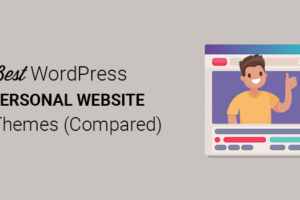Purchase a domain name and hosting plan:
The first step in creating a WordPress website is to purchase a domain name, which is the address of your website, and a hosting plan, which is the space where your website’s files and data will be stored. There are many domain registrars and hosting companies to choose from, and it’s important to do your research and find one that meets your needs and budget. Some things to consider when selecting a hosting provider include the type of hosting plan (shared, VPS, dedicated, etc.), the amount of storage and bandwidth included, and the level of customer support offered.
Install WordPress:
Once you have a domain name and hosting plan, you will need to install WordPress on your hosting account. This can usually be done through the hosting company’s control panel or with a one-click install option. The installation process will typically involve entering your login information and selecting a few basic settings, such as the language and time zone for your website.
Select a theme:
WordPress has a large number of themes available, which determine the overall design and layout of your website. You can browse and preview available themes in the WordPress dashboard, and then select and install the one you want to use. When selecting a theme, it’s important to consider the purpose and target audience of your website, as well as the level of customization you want. Some themes are more customizable than others, and some are better suited for specific types of websites (e.g. e-commerce, blogs, portfolios, etc.).
Add content:
Once you have a theme installed, you can start adding content to your website. This can include pages, posts, images, and other media. You can do this through the WordPress dashboard or by using a content management plugin. When adding content, it’s important to think about the structure and organization of your website, and to consider how you want your content to be displayed and accessed by visitors. You may also want to create a sitemap or outline to help you plan the overall layout and navigation of your website.
Customize your website:
You can further customize your website by adding plugins, which are small pieces of software that add additional functionality to your website. There are thousands of plugins available, ranging from contact forms and SEO tools to e-commerce functionality and social media integration. When selecting plugins, it’s important to consider the specific needs and goals of your website, and to choose plugins that are well-supported and regularly updated.
Publish your website:
Once you have finished creating and customizing your website, you can click the “Publish” button to make it live on the internet. Before publishing your website, it’s a good idea to do a final review and test to make sure everything is working correctly and looking the way you want. This may include checking for broken links, testing forms and other interactive elements, and reviewing the overall design and layout.
Creating a WordPress website can be a straightforward process, but it may require some technical skills and knowledge. If you are not comfortable with the steps outlined above, you may want to consider hiring a web developer or designer to help you create and set up your website. Alternatively, you can seek out online resources and tutorials to learn more about WordPress and how to create and customize a website.
Top 5 Best Web Hosting – 2023’s Top Hosting Companies





